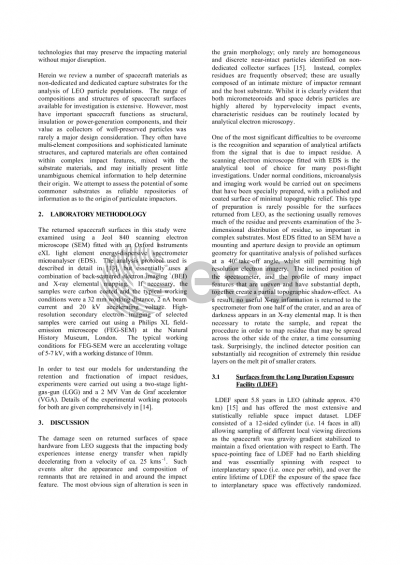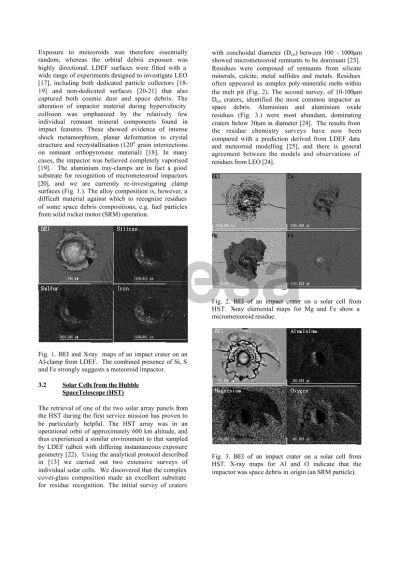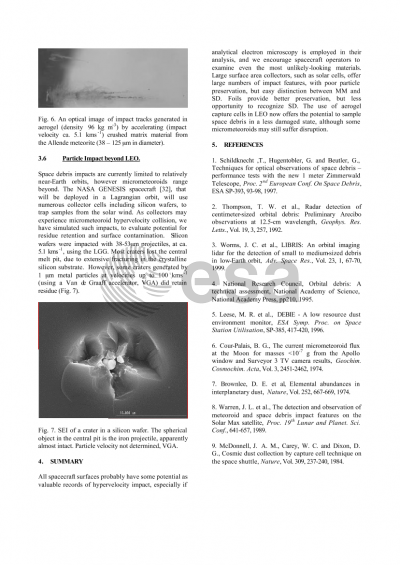Document details

Abstract
Determination of the frequency and importance of impacts by space debris and micrometeoroids of below 1 mm in size is best achieved by examining spacecraft surfaces that have been exposed in the near-Earth orbital environment. Post-flight investigation of the returned surface not only allows the measurement of particle flux and the dimensions of individual impact features, but also the composition and origin of the impacting bodies. Impact residue analysis is inherently a difficult task, as a particle traveling at speeds of between 5 and 70 km s-1 leaves little chemical evidence following a hypervelocity collision. Notwithstanding this difficulty, returned surfaces from a range of spacecraft, including the Long Duration Exposure Facility (LDEF), the Space Flyer Unit (SFU), the Hubble Space Telescope (HST) and Salyut 7-Kosmos 1686 station, have enabled detailed studies on the chemistry of both micrometeoroids and space debris. The development of new dedicated capture cells, e.g. aerogel, should enable even more detailed studies of the micro-particle populations in Earth orbits, and beyond.
Preview







